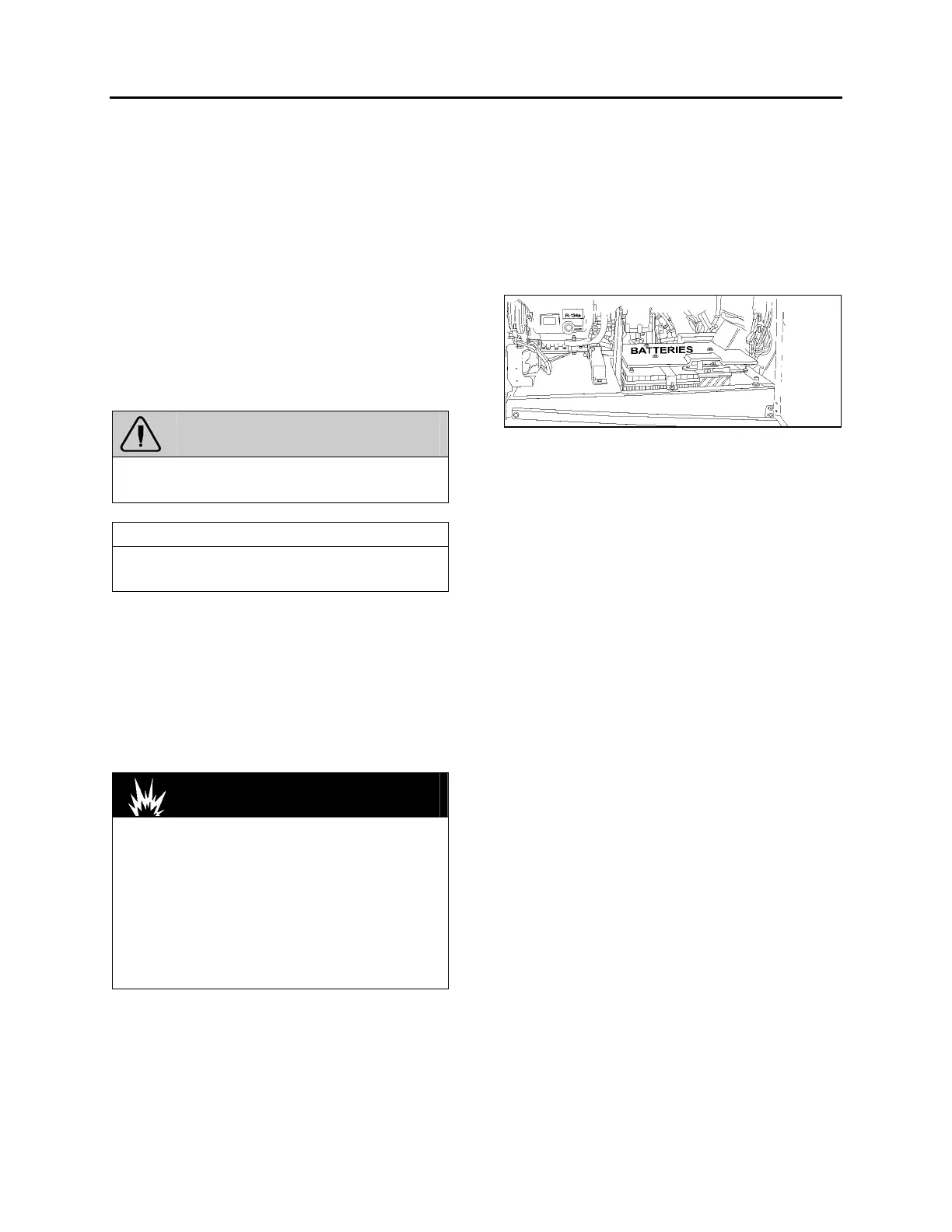Section 06: ELECTRICAL
PA1553
15
are no filler caps in the cover. The battery is
sealed, except for small vent holes in the cover.
The vents must not be restricted as they allow
small amounts of gases produced in the battery
to escape. The special chemical composition
inside the battery reduces gassing to a very
small amount at normal charging voltages.
Besides reducing gassing, the special chemistry
greatly reduces the possibility of overcharge
damage.
The vents require keeping the battery in an
upright position to prevent electrolyte leakage.
Tipping the battery beyond a 45
°
angle in any
direction can allow a small amount of electrolyte
to leak out of the vent holes.
WARNING
DO NOT tip battery by more than 45
°
when
carrying or installing the battery.
NOTE
Evidence of electrolyte leakage does not
necessarily mean the battery is defective.
With special cables properly attached to the
batteries, the metal surfaces that carry the
current are completely sealed from the
atmosphere. This prevents terminal oxidation
and corrosion that may cause starting and
charging problems. If new cables are required,
sealed terminal cable replacements should be
used to retain the reliability of the original
maintenance-free connections.
DANGER
All lead-acid batteries generate hydrogen gas,
which is highly flammable. If ignited by a
spark or flame, the gas may explode violently,
causing spraying of acid, fragmentation of the
battery, which may result in severe personal
injuries. Wear safety glasses and do not
smoke when working near batteries. In case
of contact with acid, flush immediately with
water.
The battery has four (4) major functions:
1. Providing a source of current for starting the
engine.
2. Stabilizing the voltage in the electrical
system.
3. Supplying current for a limited time, when
electrical demands of the equipment exceed
the power output of the alternator.
4. Providing a limited source of power for
connected accessories, when the engine is
not running.
The batteries are located in the engine
compartment R.H. side (Fig. 13).
FIGURE 13: ENGINE COMPARTMENT R.H. SIDE 18513
3.1 BATTERY DISCHARGE PROTECTION
To prevent discharge of the batteries when the
engine in not running, some functions are
automatically switched off if the batteries voltage
drops below 24.4 volts for more than 30
seconds. The "BAT" telltale light blinks while this
protection mode is active. Set the ignition key to
the OFF position and then turn the ignition key
to the ON position to reactivate the functions for
a period of 30 seconds before they switch off
again. If a prolonged use of the functions with
the engine not running is necessary, connect the
battery to a charger.
3.2 MAIN BATTERY RELAYS
Main battery relays (24V & 12V) are provided for
this vehicle. The relays are located in the rear
junction box (R1 & R3). The 24-volt battery relay
engages when ignition key is in the ON or ACC
position.
When the main battery relays are turned to the
OFF position, all electrical supply from the
batteries is cut off, with the exception of the
following items.
o Battery equalizer check module;
o ECM;
o Transmission Control Module (TCM);
o Preheater electronic timer;
o Preheater and water recirculating pump;
o Radio memory;
o CECM;
o Cluster memory.

